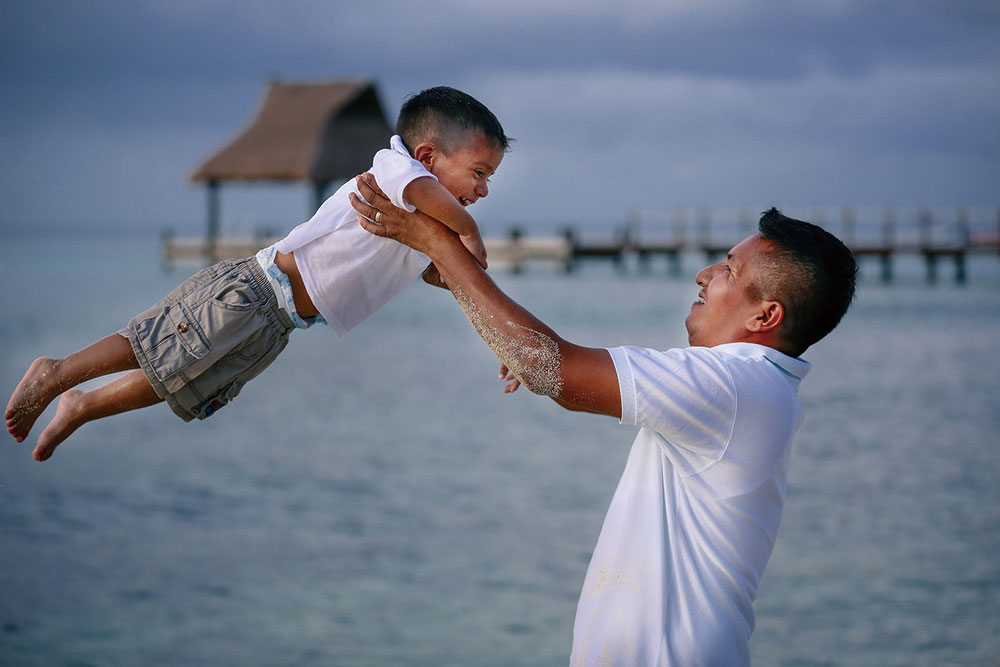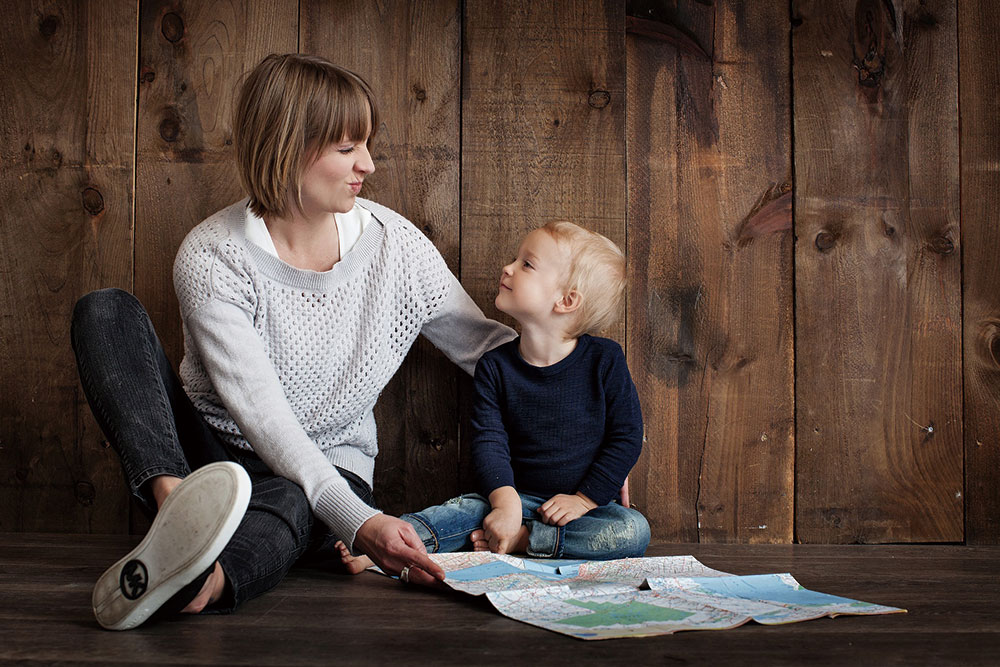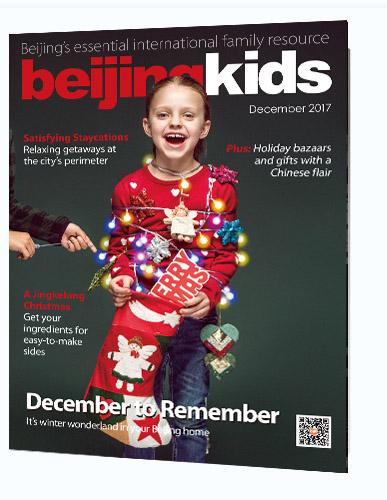There is a saying that parenting is the hardest job in the world, and also the most rewarding. Those who embark on this journey open their hearts to a deep love, as well as becoming vulnerable to deep hurts. All parents hope to raise children who will become happy, well-adjusted, successful adults, yet there is so much conflicting advice about parenting practices. When it comes to parenting, everyone has an opinion about the best way to raise a child.
With the abundance of research and perspectives of psychology, anthropology, evolution, and cognitive neuroscience, there is general agreement about the impact of parenting styles and how they shape our children. For parents looking for evidence-based approaches to raising children, this is a great place to start.
A parenting style can be loosely defined as the emotional climate that a child is raised in. There are four parenting styles, as classified in the 1960’s by Diana Baumrind – authoritarian, permissive, authoritative, and uninvolved. These define the approaches that parents take to guide, control, and socializetheir children, as well as the overall attitude of the parent or caregiver towards the child. While these parenting styles are not necessarily universal, there are many similarities across cultures.

Authoritarian Parenting
– Parents have high expectations for their children.
– Children are usually expected to follow rules without questioning and don’t receive much emotional support.
– Children usually obtain higher levels of academic achievement.
– As teenagers, they are more vulnerable to peer pressure as they are less adept at independent thinking, and can ‘look for love‘ in the wrong places.
Permissive Parenting
– Usually very nurturing and loving.
– Parents try to shield the child from experiencing upsetting emotions, and can use gifts, toys, and food to do this, or to encourage better behavior.
– Few rules and standards for behaviors, with the focus being on natural development and self-regulation.
– Linked with lower achievement. Children can be more self-centered and anxious, and their social skills can be lacking.
Authoritative Parenting
– This falls between the above two styles.
– Nurturing and responsive.
– Provides children with clear expectations and helps guide them towards positive behaviors in a way that is
respectful and age-appropriate.
– Children are treated with respect as an individual, with his or her own feelings and thoughts.
– Parents are emotionally involved in their child’s life.
– Rules are explained and parents are willing to reason with or engage in discussion.
– Discipline is fair and consistent when rules are broken.
Uninvolved Parenting
– Parents have little to no emotional involvement in their child’s life.
– Few or no demands or expectations on the child.
– Parents may try to make up for their lack of involvement by lavishing money or gifts on a child.
– If both parents are uninvolved, the lack of connection may result in a child with anxiety, substance abuse or other issues.
The Rise of Positive Discipline
Over recent years, the world has seen an explosion of “Positive Discipline” resources, a program developed by Dr. Jane Nelson. As the effect that the “authoritative” parenting style has on children’s well-being becomes increasingly established, more parents are now conscious of their own behavior and are choosing to intentionally incorporate parenting practices which will increase their child’s long-term chances of future happiness.
Less than a decade ago, the concept of positive discipline was largely unheard of in China; however, the last 3-5 years have seen a dramatic increase. Beijing is at the center of this growth and home to China’s biggest positive discipline parent educator training organization. Ruby Xing, the founder of Hello Future kindergarten community, credits the rise of the positive discipline approach to many of China’s social media key opinion leaders (KOLs), who have embraced and are promoting it as the way forward for a better society of empathetic, caring, and independent thinkers.
Beijing psychologist Shuxuan Li agrees that the rise of positive parenting is particularly prevalent among well-educated, middle-income families that have achieved levels of wealth and success, and are paying greater attention to emotional and spiritual needs. Li says more people are embracing the importance of positive family relationships for their emotional wellbeing. She also believes that positive discipline in raising children is the key.
Positive discipline is an approach based on the belief that there are no bad or naughty children, just good and bad behaviors, which are an outward display of the child’s physical and emotional needs being met or unmet. It encourages parents to recognize that there is an unmet need, whether it is tiredness or hunger, or a deeper need for love and attention. In all these situations, positive discipline offers an alternative to traditional authoritarian style punishments that can damage the parent-child relationship and child’s self-esteem.
Despite positive discipline‘s increasing popularity, Xing sees the authoritarian and permissive styles of parenting as still the most common styles in China. She encourages parents to think about their long-term goal of raising children.
“If you are too permissive, your children won’t learn to take responsibility for themselves. And if you are punishing your child, then you are eroding your relationship,” Xing says, adding that positive discipline emphasizes being kind and firm at the same time. In this way, she says, parents can have a good relationship with their child while encouraging responsibility and independence.

Take Care of Yourself First
Dr. Laura Markham (of Aha Parenting) says that studies consistently show that parents who respond with warm, respectful attunement to the individual needs of the child, set limits, and coach their child’s emotions usually raise great kids. However, to achieve this, the parent needs to effectively manage their own emotions. Learning to recognize when emotions are heightened and having a strategy for dealing with them is key to responding to our children in a peaceful, patient way and coach them through each situation.
– Be mindful. Benedict Carey says that mindfulness is “allowing an emotion to take hold and pass without acting on it.” Mindfulness takes practice, but it is a practice worth learning.
– Focus on you. Do the things that you love and that fill your soul, even if only for 10 minutes. If you are emotionally drained, your emotional resources for your child will be limited.
– Deal with your childhood wounds and break the cycle. Living away from extended family can offer a new start for parents who have been raised in a climate of negativity and criticism. But if you find yourself repeating these behaviors, look for ways to break the cycle and be the type of parent you desire to be.
Connection Is the Best Prevention
– Spend quality one-on-one time with your child. Put your phone away, and take an active interest in what they are doing. The more you connect with your child, the more happier and willing to cooperate your child will become.
– Don’t underestimate physical affection. Hug your child first thing in the morning and be excited to see them. Be excited to see them after being separated for periods of time and tell them how much you missed them. Play-fighting, rough-housing or simply laughing is an excellent way of connecting with your child, and it also helps you both to release a lot of stress and tension.
– Encourage them. Be your child’s cheerleader. Look for the positive in your child and acknowledge that, rather than criticizing them.
– Be there for your child. During times when they express big emotions or misbehave. Acknowledge and empathize with your child and they will feel more understood by you, which will deepen your connection.
– Follow the 5-to-1 ratio. For every less than ideal interaction you have with your child, follow it with 5 positive actions, such as a smile, physical touch or a way of reconnecting emotionally.
Connection and Mutual Respect
Positive discipline advocates that a child who feels secure, significant, and loved will freely and happily cooperate with a parent when they believe that they are on their side. Creating a strong, responsive, connected relationship with your child is the best preventive measure against poor behavior. When children misbehave, they need to know that they are still loved. Get down to their eye level, make a physical connection (hug or gentle touch) and make eye contact.
Keep realistic age-appropriate expectations on their development. Toddlers and preschoolers are unable to regulate their emotions and rely on the support of their parents to help them through difficult times. It helps to realize that your child is not intentionally challenging you, but instead may be struggling to deal with a situation. By connecting with your child when they are emotional, instead of leaving them to deal with the emotions by themselves, you are demonstrating that you will be there to support and love them through their crisis.
Positive discipline encourages the adult to model firmness alongside kindness. Certain situations demand rules, and these must be respected, however, a child has the right to express their feelings about those rules, and as a parent, we should acknowledge and respect those feelings and demonstrate empathy.
Effective communication and problem-solving together. Parents can encourage children to take responsibility for their own behaviors and problem solve for themselves. When a child is invested in finding a solution, it is more likely to have a lasting effect. At a younger age, problem-solving can be modeled by the parent, so that eventually they can learn to problem solve on their own.
Punishment vs Discipline
While discipline is guiding and equipping the child towards making a better choice in the future, punishment focuses on making a child suffer for breaking the rules. It is defined as an action with an intent to hurt, physically or psychologically, in order to teach a lesson. The problem with punishment is that it is not effective in creating better behavior, and research shows that the opposite happens, with punishment resulting in more frequent bad behavior.
– Avoid physical force. Spanking has a lasting effect on your child and jeopardizes your relationship with your child. Hitting is also confusing for a child who is told ‘hitting people is bad’ when they hit others. Keep the rules simple: hitting is never okay.
– Stop yelling. Make a commitment to stop yelling, and create a strategy to help yourself (e.g. stop talking, take deep breaths, take a time-out).
– Punishment teaches a child that they are ‘bad.’ It is impossible for a child to separate punishment for their behavior from their personal identity and self-worth.
Teaching as Discipline
Teaching is an important part of positive discipline. Give children clear expectations of behavior and consequence. When a child is given a task, demonstrate how to do it, and practice with them before expecting them to do it independently. Try to avoid telling them what not to do.
Encouragement
Positive discipline focuses on encouraging effort, rather than praising outcomes. Focus on the child’s effort, regardless if they are successful or not. Focusing on effort and improvement builds long-term self-esteem and empowerment.
The Experts
 Ruby Xing is a certified Positive Discipline Trainer and founder of China’s largest team of Positive Discipline Association (America) certified parenting educators in Beijing. She recently began Hello Future, a kindergarten community that educates families in the Positive Discipline model.
Ruby Xing is a certified Positive Discipline Trainer and founder of China’s largest team of Positive Discipline Association (America) certified parenting educators in Beijing. She recently began Hello Future, a kindergarten community that educates families in the Positive Discipline model.

Shuxuan Li is a psychological consultant who provides professional psychological counseling for teenagers, college students, and adults as well. She is also a lecturer in the Family Constellations Courses.
There are plenty of fabulous resources available locally and online including workshops and training sessions to help parents who are looking to enhance their relationships with their children.
The benefits of positive parenting are huge and worth the investment. Check out www.positivediscipline.com or www.hellofuture.com.cn for more information.
Photos: Pixabay; courtesy of Ruby Xing and Shuxuan LI
This article appeared on p46-48 of beijingkids December 2017 issue.





